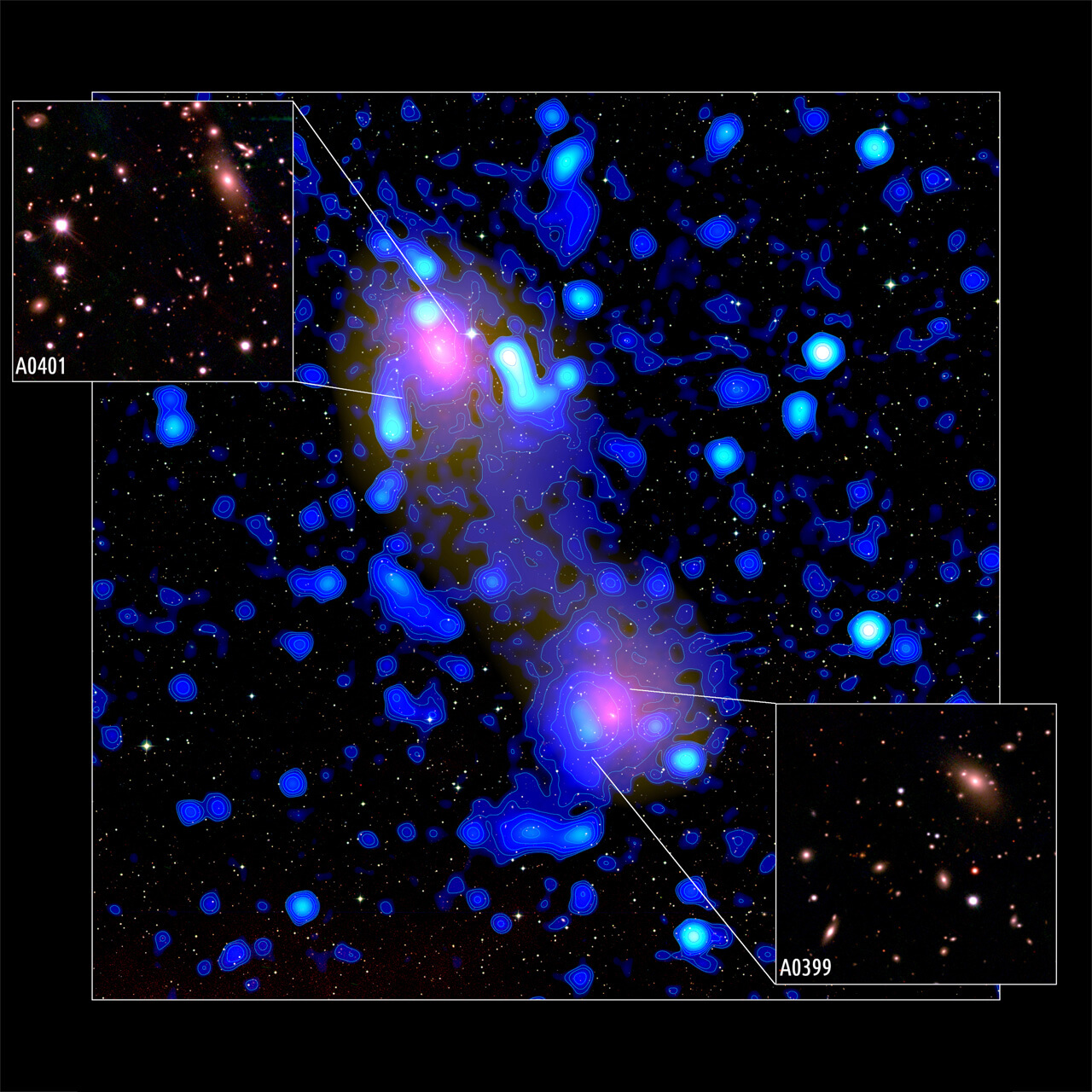Observing two merging clusters of galaxies Abell 0399 and Abell 0401, a billion light-years away from Earth, astronomers recorded radio emission from a plasma bridge connecting them, discovered as far back as 2012 by the European space agency Observatory Planck.
For the first time, we were able to capture radio emission from matter in a cosmic filament, revealing the presence of an intergalactic magnetic field, which is challenged by modern theories describing particle acceleration in these vast areas of space.
Clusters of galaxies are the most massive gravitationally-related structures in the universe. They contain hundreds to thousands of star houses, as well as a huge amount of gas and dark matter. In the space between these clusters, galactic filaments stretch, which together form a huge cosmic network.
Clusters of galaxies are born at the junction of these filaments and grow, accumulating space objects that fall into them, which creates magnetic fields and relativistic particles in a gas.
Observing two such structures in the Aries constellation, the clusters Abell 0399 and Abell 0401, the mass of which is 7570 trillion and 930 trillion exceeds the solar one, respectively, astronomers recorded a low-frequency radio emission from the gas connecting them using a radio interferometer.
Composite image of the merging clusters of galaxies Abell 0399 and Abell 0401, separated by 10 million light years. The nuclei of both structures are permeated with red-hot plasma, which emits x-rays (red tones). Observations in the microwave range show a thin thread of matter connecting two clusters (yellow tones). The blue tones show radio sources associated with individual galaxies and two scattered halos toward the centers of the two clusters. The detected bright radio emission bridge is visible along the thread connecting Abell 0399 and Abell 0401. Image credit – DSS and Pan-STARRS1 (optical), XMM-Newton (X-rays), PLANCK satellite (yparameter), F. Govoni, M. Murgia, INAF
This indicates the presence of a magnetic field and relativistic electrons in the filament of a space network that connects two clusters. The data showed that the structure is more than can be explained by standard models, so this presupposes the existence of a mechanism of acceleration of particles that is still operating in an intergalactic gas, which is still unknown to us.
Scientists note that their modeling allows us to explain radio emission by re-acceleration of relativistic electrons by means of shock waves generated by the merger.
Radio bridge connecting galaxy clusters
Click To Tweet
The post Radio emission from a plasma bridge connecting galaxy clusters appeared first on Upcosmos.com.
